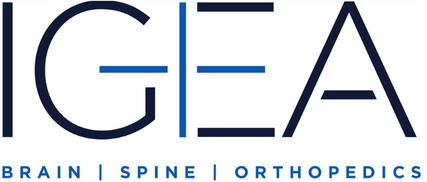VERTEBRAL FRACTURE TREATMENT IN NEW JERSEY
Vertebral fractures typically occur to the thoracic (mid) and lumbar (lower) areas of the spine or their junction in acute and traumatic fashion. High velocity impact accidents such as a car crash or fall from great heights are usually the culprit for the injury. Our spine center in New Jersey has seen vertebral fractures often leading to damage of adjacent nerves.
COMMON SPINE FRACTURE INDICATORS
As with many injuries resulting from high-energy trauma, pain is the most common symptom. Nerve damage may also present itself in the form of:
- Weakness
- Numbness
- Tingling
- Neurogenic shock
- Spinal shock
The general trunk, genital area and lower extremities are the most likely regions to experience neural deficits.
ASSOCIATED CLINICAL EXAMINATIONS
Our patients in New Jersey with vertebral fractures due to high-energy accidents are at risk of internal bleeding and may require a series of blood tests and additional laboratory studies for proper evaluation of possible affected organs. Clinical examinations at our New Jersey spine center which may also be performed after a vertebral fracture to understand the full extent of the injury may include:
- Urinalysis to rule out kidney damage
- Evaluation of cardiac-marker, amylase, lipase and urine myoglobin, and serum creatine kinase levels
Spinal surgeons will rely on the use of the following imaging tests to verify the severity of the injury:
- Radiography – helpful in imaging fractures, although, radiographs may not be strong enough to outline hairline fractures
- Computed tomography (CT) scanning – scans of this nature will pick up bony fractures with greater ease than radiographs
- Magnetic resonance imaging (MRI) – MRI is the tool of choice for detecting neural, tissue and bone damage concerning vertebral fractures
CONSERVATIVE AND SURGICAL TREATMENT
Nonsurgical Fracture Options
The use of a spinal vest or brace for the prevention of rotational movement and bending for minor fractures and management of unstable spinal fractures is a common non-operative treatment method as surgery may not be required.
Appropriate support is paramount for proper and effective rehabilitation.
Surgical Fracture Options
The objectives of surgical management are pressure relief of the spinal cord canal and adequate reduction of bones and stabilization of the vertebral column. The following surgical approaches offered at IGEA Brain, Spine & Orthopedics in New Jersey for vertebral fractures are dependent on the fracture pattern:
- Posterior approach – This method is helpful for stabilization and fixation of the rear bony elements of the spine. This approach is used when early mobilization is an option and decompression of the spinal canal is not the focal point.
- Posterolateral approach – Is oftentimes used for high-level vertebral fractures such as when limited ventral exposure is needed. This method may be combined with the posterior approach.
- Anterior approach – Vertebral bodies at multiple levels can be accessed through this frontal approach. It is most useful for pressure relief of injuries and spinal canal problems caused by vertebral fractures from trauma to the body.
TRUSTED PROFESSIONAL CARE
Oftentimes, surgery may include metal screws, rods and cages to ensure proper spinal fixation and stabilization. Talk to one of our doctors for back pain at New Jersey’s IGEA Brain, Spine & Orthopedics to explore your treatment options for painful spine conditions.

